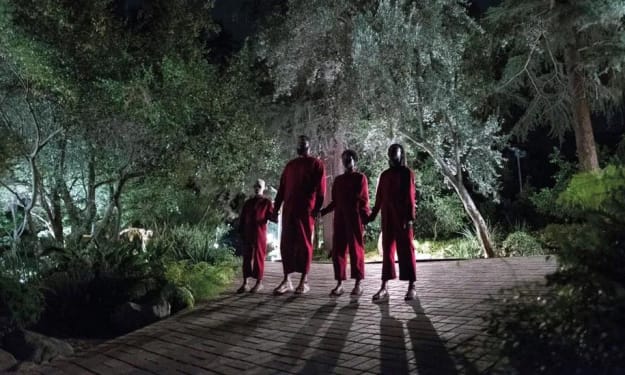The fairytale world of photographer Tim Walker
The photographer’s new V&A collaboration is “a meditation and medication”.

The exhibition is named after the phrase used by an awestruck archaeologist in 1922 on seeing for the first time the glittering contents of Tutankhamun’s tomb: “wonderful things”. And the trademark Walker-wonderland preoccupations are all here – the English countryside, fairy tales, male nudes, and his influences in art and photography, from Beaton and Lartigue to children’s book illustrator Arthur Rackham.
A leading international fashion photographer, Walker rose to prominence in the 1990s, becoming a star contributor to British Vogue. He has since become well-known for his otherworldly, surrealist, and occasionally grotesque images, both in fashion and portraiture.
Throughout, the V&A artefacts are displayed alongside the photographic work that they inspired, lending the objects that ignited Walker’s imagination a certain talismanic quality. “We had a special time through the whole journey of the exhibition,” he says. “I feel like the exhibition guided us itself. Nothing was forced; it was a really gentle process. It lifted us up and it felt like it had a power all of its own.”
In fact, the whole experience of creating Wonderful Things has been “healing” says Walker. In what way? “There was a point where I was having a bad time. It was a low point. But by engaging with beauty, it put my predicament into perspective. It was a balm that elevated me in that low period, and I managed to ascend my mood by engaging with a 16th-Century stained-glass window, or an embroidered casket, or a Constable painting of clouds. For me it was a meditation and medication.”
The photographic series Illuminations, in which models are depicted, cocoon-like, in long Moncler puffer coats, was inspired by a 16th-Century stained-glass artwork, Tobias and Sara on their Wedding Night, 1520. The transparent piece struck Walker as a “touching depiction… the depth of the room and an atmosphere of cosiness and domesticity – the slippers, the dog, the couple in bed – it makes me feel very peaceful.” The vibrant red of the curtains brought to mind his childhood. His mother made red silk lampshades which illuminated the family home, a welcoming glow to come home to.

Why Not Be Oneself?, a striking set of images of the actor Tilda Swinton in elaborate Gucci turban and tunic and giant Lisa Eisner jewellery, was inspired by a 1962 photograph of the poet Dame Edith Sitwell by Sir Cecil Beaton. In the pictures Swinton, who is a distant descendent of Sitwell, channels her ancestor – complete with distinctive pencilled eyebrows – at Renishaw Hall, the Sitwell family seat in Derbyshire. The piece is “a celebration of age and a celebration of difference. Tilda manifested Edith Sitwell’s striking weirdness and her belief in her weirdness.”
This exhibition is fantasy, yes, but it connects to the real world – Susanna Brown
Curator of Photographs at the V&A Susanna Brown worked closely with Walker throughout the process. “He has a boundless imagination,” she tells BBC Culture. “The exhibition features 10 distinct worlds, each with their own soundscape, in which he weaves together all the different threads. There is a narrative in his work, he’s a conjurer, and he conjures up scenes of make-believe.” He is also, importantly, a collaborative artist, she adds. “He’s like a conductor of an orchestra, coaxing the best out of them. He has a shared vision with his collaborators, whether he’s making a portrait or creating a fashion fantasy.”

There’s no denying the magical, fairy tale quality of Walker’s vision – a word often used to describe his work is ‘fantastical’. But at a time when the world is full of challenges – climate crisis, poverty, political instability – where does ‘fantastical’ fashion and photography fit in? It is an existential question facing the fashion world at the moment. Are such things merely an indulgence, frivolity, a form of escapism? No, in Brown’s view. “There’s space in the creative world for a broad spectrum of work,” says the curator. “We need functional clothes but we need to express ourselves, our personalities, our emotion, our mood – through our dress. And this exhibition is fantasy, yes, but it connects to the real world.”
Of this world
Walker’s long-time collaborator, the art director Shona Heath, agrees that Wonderful Things is “very much of this world,” for all its fairy-tale mood. Heath tells BBC Culture: “For instance, all body types are shown here – small, big, fat, thin, all beautiful. It’s also a celebration of gay love, and of strong women. For Tim, Edith Sitwell is incredibly beautiful, as beautiful as any young woman. It’s all beautiful. That’s not exactly the message of the exhibition, but that’s where it comes from.”
The art director, who creates the sets for Walker’s pictures, describes the exhibition as “a gift” and Walker as a great collaborator: “We genuinely inspire each other. We both had a good grounding in art history before we met each other, and we shared a love of many things, including photographic influences and children’s book illustration.”
These shared passions can be seen in the exhibit Box of Delights, another series of images. The idea was inspired by a 17th-Century embroidered casket and a court mantua from the museum collection. Heath created a chintzy sitting-room in which the photographs are displayed, as well as a large-scale secret garden, used in the shoot. As Heath explains: “It’s about a young man brought up in a [British] northern working-class world, and feeling caged like a butterfly; he then flourishes and shows his true colours. It’s about being transgender and the flamboyance – and the hardship – involved in that. The performers are not ‘styled’, these are their own personas.”
Likewise, Cloud 9 has a contemporary, real-world narrative. The vision for the photographic shoot was sparked by an exquisite 16th-Century, watercolour-and-gold painting, Krishna and Indra, from the Mughal Empire. The images it inspired are set in the English countryside on a glorious summer’s day, with models of Indian, Pakistani and Bangladeshi heritage. As Editor-in-chief of British Vogue Edward Enninful puts it in the book of the exhibition: “Certain individuals might be preaching hate, but look, here is a celebration of a culture that’s not just Indian, Pakistani or Bangladeshi, but also British, a new Britain you could say.”
The V&A objects are a balm from the darker times of humankind – Tim Walker
In Cloud 9, as in all the other shoots, the models and performers contributed ideas and played a creative part. Walker is passionate about the collaborative process. “I think with the type of pictures I do, I can’t do it on my own, it needs a team of people,” he tells BBC Culture. “Being a photographer can be lonely but the pathway I’ve chosen is never lonely because I’m engaging with the team and with the performers and they become friends. It’s like a family, a party celebration.”
In another section of the show, the artefact that ignited the photographer’s imagination is a hand-painted photograph of the Bayeux Tapestry. In Walker’s interpretation of the tapestry, the soldiers are depicted as eco-warriors, and all the sets, props and costumes have been knitted, crocheted, crafted, homemade and recycled. The section is named Soldiers of Tomorrow.
“It’s enlightening, this level of beauty, and humbling. I had an emotional response to it, so what we’re doing with the exhibition is to honour the beauty of these things. I want it to be a celebration of the healing properties of humankind’s beauty.”
About the Creator
Alessandro Algardi
"She was a girl who knew how to be happy even when she was sad” and that's important you know.






Comments
There are no comments for this story
Be the first to respond and start the conversation.